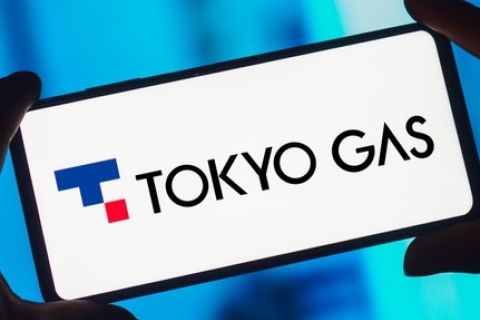[Editor's note: This article originally appeared in the November issue of E&P Plus. Subscribe to the digital publication here.]
Technological advancements to produce hydrocarbon fluids from the reservoir to the surface has generally been most prevalent in directional drilling. As wells come online, their IP is typically supported by electric submersible pumps or gas-lift technologies, which are relatively unaffected by wellbore geometry. As production rates decline, wells are converted to reciprocating rod lift, understood as the most economical form of producing fluids. Modern, unconventional, directional deviated and horizontal wells bring challenges to industry. The drilling department’s decision-making most often does not have the flexibility to consider lifelong production complications due to wellbore path and design. High deviation, doglegs or changes in direction lead to an increase in failure frequency when on reciprocating rod lift. It is imperative for sucker rod pumping to remain economical and reliable in modern wellbores.

A new manufacturing process led by product design has been commercialized for sucker rod pumping. Material science is paramount to the utilization of this new technology. Black Mamba Rod Lift’s sucker rod stabilizer is marketed as end-to-end sucker rod control for well operators. The Black Mamba, an over-molded helical centralizer, is available for use with traditional steel sucker rods and is rapidly finding its way through the marketplace.
Traditional deviated vertical wells feature doglegs and troublesome geometry farther down the wellbore. These areas are commonly addressed with consumable plastic 4-fin sucker rod guides or centralizers. The guides and centralizers prevent steel-on-steel wear between the rodstring and production tubing.
Deep unconventional horizontal wells are drilled efficiently by using multiwell pads; this drilling practice causes significant deviation, translating to high side loads when designing for reciprocating rod lift applications. The axial load on the rodstring is greater farther up the rodstring (rod weight plus fluid load). When the rodstring makes contact with the tubing, this axial load is transferred by way of side forces causing rod-on-tubing wear. High side loads lead to holes-in-tubing and sucker rod parts, failures commonly observed throughout industry.
Producing sand issues
Fracking is utilized to increase the hydrocarbon inflow to the producing well. Sand is used and pumped into the formation in an effort to crack and hold the Earth open on a microscopic scale, allowing and providing an increase in the fluid flow to the wellbore. A side effect of this technological advancement is the introduction of sand with the hydrocarbon fluids, which must be produced. Producing sand causes its own issues in reciprocating rod lift. The sand acts as an abrasive to the downhole pump, sometimes seizing the pump, as it can find its way between the downhole pump plunger and barrel.

—Jonathan Martin, President and COO with Black Mamba Rod Lift
In this case, operators may opt for a “high-clearance” pump, which allows the solids to pass and be produced. With increased clearances, downhole pump efficiency is reduced. To counter this, operators will set the surface pumping unit to operate at an increased rate. An increase in acceleration and velocity of the rodstring then exacerbates all potential issues of compression, side load and tagging, which leads to an increase in failure rates as the system is cycling more often at higher velocity and with higher kinetic energy in a given amount of time.
Other issues
Other reciprocating rod lift issues exist that can lead to premature sucker rod failure. Pump tagging (fully stroking the pump-in) sends significant compressive stress and loads through the rodstring at every pumping cycle. Other nature-induced complications in the rod lift system that negatively affect the sucker rodstring include fluid pounding, gas pounding, slug flow and intermittent stuck pumps, among others. Instances of compression are impossible to avoid and undeniably present within the system.
In all instances of the above, sucker rod flex, compression and/or buckling cause drastic increases in stress along the sucker rod, sometimes far greater than peak tensile stresses predictive software computes during the upstroke when fluid is lifted.
Compression can cause buckling or instability in the sucker rodstring, creating high stresses found at rigid areas along the sucker rod body. These high stresses create micro-fractures in the surface of the steel rod that propagate and lead to a guaranteed eventual rod part.
For a slick, unguided sucker rod, bending moments and micro-fractures occur at the transition point from the forged upset down to the primary sucker rod body diameter. For guided sucker rods, bending moments and common rod failure locations occur at the edges of sucker rod guides where the rod is held rigid and centered in the tubing.
A drastic increase in sucker rod life can occur if these instances of compression are controlled and accommodated. Compression is not necessarily problematic when sucker rod instability is alleviated, preventing the bending moments and high-tensile stresses during compression instances.
Specs of the centralizer
The Black Mamba provides constant centralization and reinforcement of the sucker rod over an extended length. The plastic centralizer features a single-fin design, helically wrapping around the sucker rod up to 36 inches in length.
When compression occurs, the rod is held co-axially in alignment with the production tubing. Bending moments are eliminated as the sucker rod can flex and move, yet the rod is still centralized when in the rodstring is operating as intended in tension. If compression exceeds the critical buckling load of The Black Mamba two per, three per or four guides per rod configuration, it is best to utilize Black Mamba Rod Lift’s fully guided sucker rod molded as seven guides per rod. The engineering and reinforcement of the rod and centralizer assembly increases the sucker rod’s critical buckling load (the peak compressive load before instability, e.g., buckling occurs) beyond what is possible in a rodstring design. Peak compressive load potential is mostly equal to the weight of the rodstring above the sucker rod in question.
Case study
This year multiple operators in the Permian Basin have installed The Black Mamba in modern horizontal wells of which rod pumping with prior practices and rod guides have been problematic. With this technology, sucker rodstring dynamics are ideal; complete axial compliance exists between the sucker rod and tubing. Optimizing the rod design and controlling the string from top to bottom provides minimal noise in load cell readings and downhole dynamometer card generation. Surface and downhole testing have validated the success of the seven per guided sucker rod, ideal for areas of known negative loading.
Operators can pump the curve with confidence, setting the downhole pump beyond the kickoff point allowing greater pump fillage and reduced pump-off time. Utilized as a replacement for traditional legacy sucker rod guides, The Black Mamba can be substituted for traditional guided sucker rods and eliminate the need for heavy sinker bars and costly stabilizer bars, providing superior sucker rodstring protection and control at a reduced cost.
Recommended Reading
DXP Enterprises Buys Water Service Company Kappe Associates
2024-02-06 - DXP Enterprise’s purchase of Kappe, a water and wastewater company, adds scale to DXP’s national water management profile.
ARM Energy Sells Minority Stake in Natgas Marketer to Tokyo Gas
2024-02-06 - Tokyo Gas America Ltd. purchased a stake in the new firm, ARM Energy Trading LLC, one of the largest private physical gas marketers in North America.
California Resources Corp., Aera Energy to Combine in $2.1B Merger
2024-02-07 - The announced combination between California Resources and Aera Energy comes one year after Exxon and Shell closed the sale of Aera to a German asset manager for $4 billion.
Vital Energy Again Ups Interest in Acquired Permian Assets
2024-02-06 - Vital Energy added even more working interests in Permian Basin assets acquired from Henry Energy LP last year at a purchase price discounted versus recent deals, an analyst said.
DNO Acquires Arran Field Stake, Continuing North Sea Expansion
2024-02-06 - DNO will pay $70 million for Arran Field interests held by ONE-Dyas, and up to $5 million in contingency payments if certain operational targets are met.





